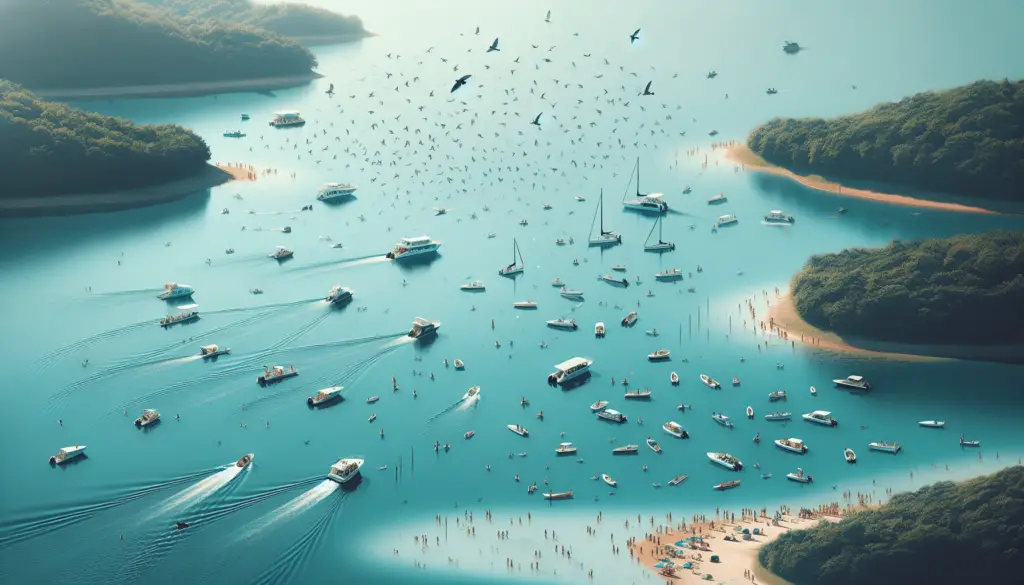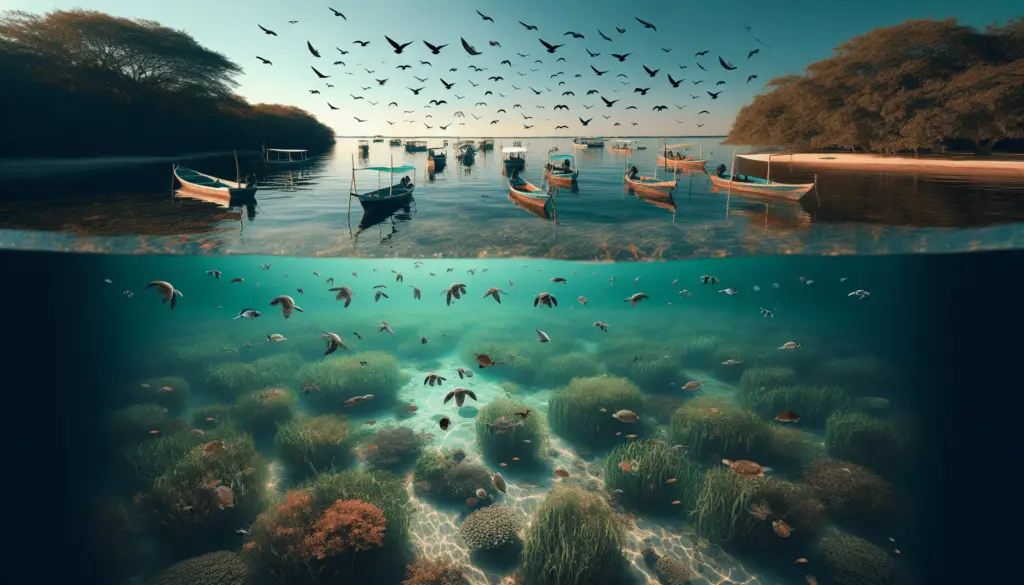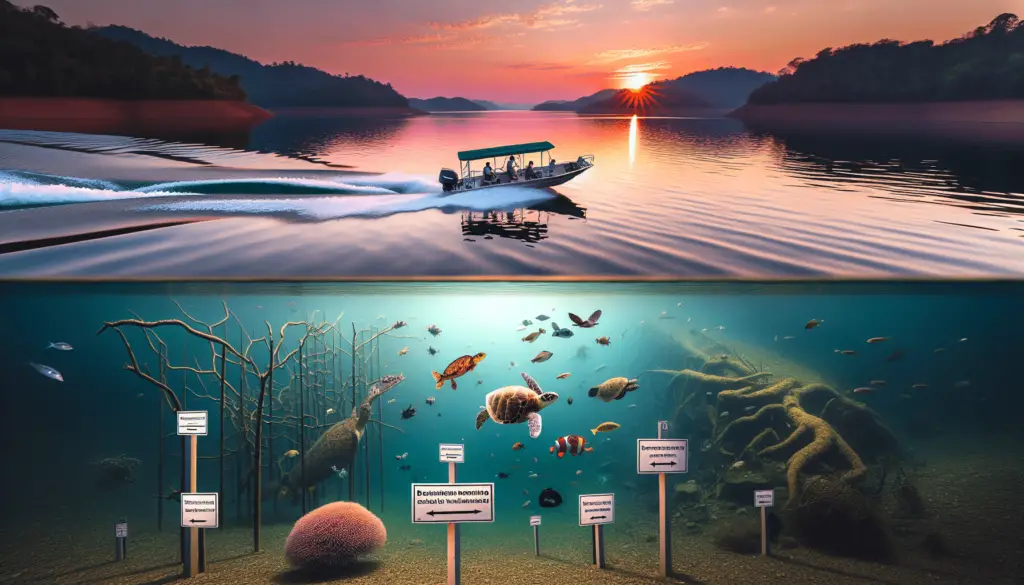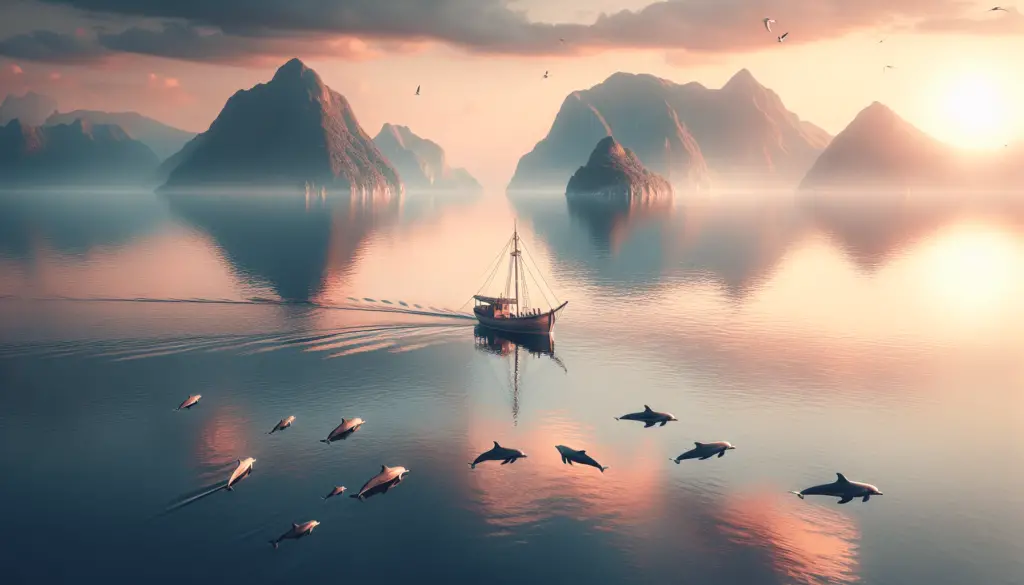Picture yourself cruising through open waters, the wind in your hair and the sun glinting off the hull of your boat. Quite magical, isn’t it? Now, imagine intersecting this idyllic boating experience with the fascinating world of aquatic wildlife and preservation efforts. Wouldn’t that add more meaning and richness to your marine adventure? This article is for you, especially if you’re someone passionate about boats and conservation. It’s all about maintaining the delicate equilibrium between winning boat races and preserving aquatic wildlife, specifically while navigating through Protected Waters. Brace yourself for an engaging ride through policies, guidelines, and known best practices, helping you blaze through waters without causing a stir in these precious ecosystems.

Understanding Protected Waters
Navigating on water seems like a carefree activity, and to an extent, it is. However, there are multiple areas known as ‘Protected Waters’ that involve more than just simply sailing around.
Defining Protected Waters
Protected Waters, also known as Marine Protected Areas (MPAs), are clearly defined zones in the ocean where human activity is more strictly regulated than the surrounding waters in order to protect the marine ecosystems. These regulations may be to protect the biodiversity of species in the water, preserve the cultural and heritage sites that lie beneath, or to conserve resources.
The Importance of Marine Conservation Zones
Just like on land, where specific areas are marked off to help protect and regrow forests, Marine Conservation Zones are put in place to protect marine life. Mankind’s footprint is everywhere, and these protected zones help establish the necessary equilibrium, allowing marine life to thrive without the constant impact of human activities, especially in sensitive habitats.
Various Kinds of Marine Protected Areas
While they all fall under the umbrella of Protected Waters, there are several types of MPAs, and each comes with its regulations and restrictions. For instance, some areas, known as no-take zones, restrict all kinds of extraction, be it commercial or recreational fishing. Some MPAs are known as Multiple Use MPAs, where restrictions vary by zone.
Local, National, and International Marine Laws
Now that we have understood what Protected Waters are, it’s time to take a look at marine protection laws.
Understanding Marine Protection Laws
Marine Protection Laws vary significantly based on the local, national, and international legal frameworks. These laws can dictate everything from fishing regulations, boating rules to waste disposal in the marine environment.
The Role of International Law in Protected Waters
On an international level, conventions and treaties protect the waters and the life that dwells within. These laws work to prevent pollution from ships, protect marine life from humans, and ensure the conservation and sustainable use of oceans and their resources.
National Laws Governing Protected Waters
Each country, respecting international law, enforces its regulations regarding marine protection. These can cover a wide scope – including designating areas for protection, monitoring human activities, and even enforcing fines and penalties for anyone caught breaking these laws.

Boating Rules in Protected Waters
If you love boating, then understanding the rules for protected waters is vital.
General Rules for Boating in Protected Waters
The general rules for boating in Protected Waters include maintaining a certain speed, restrictions on anchoring, or in some cases, feeding the marine wildlife. Also, certain activities such as fishing or even scuba diving might be regulated or not allowed in some areas.
Specific Regulations for Different Types of Protected Waters
Remember those different types of MPAs we talked about? Each of these comes with its unique set of rules that you need to understand before venturing into the waters.
Avoiding Harmful Activities in Protected Waters
The goal of any boater should always be to minimize his or her impact on the waters they’re cruising. This means maintaining respect for the regulations, ensuring no waste is dumped into the water, and not disturbing the marine life in and around these zones.
Impacts of Boating on Marine Ecosystems
Boating isn’t entirely benign.
How Boating Activities Can Affect Marine Life
High-speed activities can create substantial noise pollution underwater, which can be very disruptive to marine animals. Moreover, boats release exhaust fumes and sometimes accidentally dump oils and other hazardous materials into the water, polluting the marine environment.
Long-term Consequences of Disrupting Marine Ecosystems
Disruption to marine ecosystems can have long-term impacts on the environment. Changing the behavior of species, damaging coral reefs, and polluting waters are just some of the effects that can accrue over time.
Damage Caused by Anchors and Propellers
Anchors and propellers can cause great damage to the sea floor habitats, especially to coral reefs. Being mindful of where you’re anchoring can help mitigate this impact.

The Role of Boaters in Marine Conservation
As a boater, you’re not just a user of the waterways- you’re a custodian too.
Promoting Responsible Boating Practices
Promoting responsible boating practices among others in your circle is an effective way of contributing to marine conservation. This can mean anything from avoiding areas with heavy marine traffic to respecting all rules in protected waters.
Supporting Conservation Efforts Through Responsible Tourism
As a boater, choosing to visit only those marine areas that promote sustainable practices can send a powerful message about the importance of conservation.
Educating Other Boaters on the Importance of Conservation
Encourage a broader understanding of the protected areas among colleagues by sharing information about the importance of conservation and the rules that need to be followed in each different area.
Safe and Respectful Wildlife Viewing
Interaction with marine wildlife can be one of the most rewarding aspects of boating, provided it is done right.
Keeping a Safe Distance
Just like with terrestrial wildlife, maintaining a safe and respectful distance from marine wildlife is important. This permits you to enjoy the ecosystem without disrupting it.
Avoiding Disturbance to Wildlife
Do not disturb nests or habitats, chase or corner wildlife, or make loud noises that could disrupt their natural behavior. Make your observation of nature as passive and non-invasive as possible.
Properly Discarding Waste
Trash and especially plastic can be harmful to marine life. Make sure to dispose of your waste responsibly and not in the ocean.

Planning Your Boating Excursion
A successful boating trip is one where you have anticipated all potential scenarios.
Researching Your Destination
Understanding the specific restrictions and regulations in place in the waters you are planning to visit will help you prepare for your trip.
Understanding the Seasonal Factors
Just like on land, marine life behaves differently during different times of the year. Understanding these patterns can enhance your boating experience and reduce your impact on wildlife.
Preparing for Emergency Situations
Despite our best efforts, something can always go wrong. Whether it’s a mechanical breakdown or sudden change in weather, you need to have an emergency plan in place.
Balancing Distributed Recreational Use and Conservation
As boaters, we have the power to help both protect our marine ecosystems and ensure their viability for future generations.
The Challenge of Reconciling Use and Conservation
The challenge lies in finding a balance between enjoy the beauty the ocean has to offer and preserving it for future generations.
Strategies for Balancing Access and Protection
One example strategy is spatial zoning- separating recreational areas from those where human activities could have serious consequences on the environment.
Engaging with Marine Spatial Planning Processes
As a boater, getting involved in your local marine spatial planning process can also help influence the way these zones are planned and ensure they work for everyone.

Roles of Government and Nonprofit Organizations in Protecting Marine Life
These entities play a significant role in the preservation of marine ecosystems.
Government Policies for Marine Protection
Government policies can shape the future of marine ecosystems through management by establishing protected areas, implementing regulations, and providing funds for research and conservation projects.
Nonprofit Organizations Promoting Marine Conservation
Non-profit organizations play a vital role by conducting research, spreading awareness, conducting clean-ups, and lobbying governments to enforce stricter marine conservation laws.
Collaboration between Government and Nonprofits
Cooperating efforts between government bodies and non-profit organizations can lead to the most impactful changes in policies and in the implementation of marine protection laws.
Encouraging Sustainability in Boating Practice
Adopting sustainable practices in boating could lead to a widespread revolution in the way we interact with our oceans.
Benefits of Sustainable Boating
Sustainable boating means less harm to marine life, reduction in pollution, and ensuring a healthier and more enjoyable ocean for future generations.
Practices Leading to Sustainable Boating
Sustainable boating practices could include using alternative fuels, minimizing waste, and avoiding disturbing wildlife. In addition, knowing when not to boat, such as during sensitive breeding seasons, can make a huge difference.
Boating Technologies Supporting Sustainability
Advancements in technology, like quiet electric motors and eco-friendlier materials for boat construction, are playing a role in supporting sustainability in boating practices.
In conclusion, as a boater, you play a vital role in ensuring the health of our oceans. Remember, the goal is not just to enjoy the beauty of the ocean but also to ensure its preservation for future generations. It’s about navigating protected waters in a way that balances wins and wildlife.

